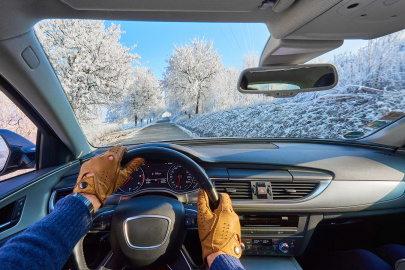In 2020, Americans drove 2.83 trillion miles—the equivalent of 6 million roundtrips to the moon. With light-duty vehicles accounting for more than 40% of U.S. oil use, most people want to use less gas to save them money, helping reduce pollution and improve energy security. Luckily, there are plenty of ways to improve your gas mileage or avoid using gas altogether.
Driving Tips*
- Minimize idling your car by turning off your engine when your vehicle is parked for more than 10 seconds. Idling can use a quarter to a half gallon of fuel per hour, depending on engine size and air conditioner use, adding up to three cents of wasted fuel a minute. In the winter, most manufacturers recommend driving off gently after about 30 seconds. The engine will warm up faster being driven, which will allow the heat to turn on sooner, decrease your fuel costs, and reduce emissions.
- Drive sensibly and avoid aggressive driving, such as speeding, rapid acceleration, and hard braking. Aggressive driving can lower your highway gas mileage by 15% to 30% and your city mileage by 10% to 40%.
- Avoid driving at high speeds. Above 50 mph, gas mileage drops rapidly. For every 5 mph above 50 mph, it's like paying an additional $0.22 per gallon of gasoline.
- Reduce drag by placing items inside the car or trunk rather than on roof racks, which can decrease your fuel economy by up to 8% in city driving and up to 25% at Interstate speeds.
- Avoid keeping heavy items in your car; an extra 100 pounds in your vehicle could increase your gas costs by up to $.03 cents per gallon.
- Combine errands. Several short trips, each one taken from a cold start, can use twice as much fuel as one trip covering the same distance when the engine is warm.
- Check into telecommuting, carpooling, public transit and active transportation like bicycling or walking to save on fuel and car maintenance costs. Many urban areas provide carpool lanes that are usually less congested, which means you will get to work and home faster and more refreshed!
*All cost estimates assume an average price of $3.15 per gallon. Source: FuelEconomy.gov
Car Maintenance Tips
- Use the grade of motor oil your car's manufacturer recommends. Using a different grade of motor oil can lower your gas mileage by 1%-2%.
- Inflate your tires to the pressure listed in your owner's manual or on a sticker that is either in the glove box or driver's side door jamb. This number may differ from the maximum pressure listed on your tire's sidewall.
- Get regular maintenance checks to avoid fuel economy problems due to worn spark plugs, dragging brakes, sagging belts, low transmission fluid, or transmission problems. Fixing a serious maintenance problem, such as a faulty oxygen sensor, can improve mileage by as much as 40%.
- Don't ignore the check-engine light—it can alert you to problems that affect fuel economy as well as more serious problems, even when your vehicle seems to be running fine.
Learn more fuel saving tips and other ways to save money on FuelEconomy.gov.
Subscribe to Energy Saver Updates
Subscribe to receive updates from Energy Saver, including weekly tips, updated content, and seasonal energy saving guidance for consumers and homeowners.




